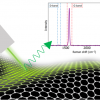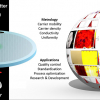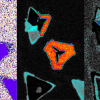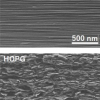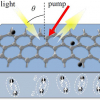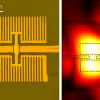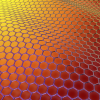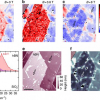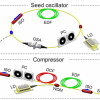Focus on Graphene
Researchers at the University of Illinois Chicago have used graphene and Raman spectroscopy to detect the SARS-CoV-2 virus in laboratory experiments.
In this application note, an Edinburgh Instruments RM5 Raman Microscope is used to highlight how Raman microscopy an essential tool for any material scientist researching graphene.
Graphene Flagship researchers have developed a new measurement standard for the analysis of graphene and layered materials that could accelerate production and optimise device fabrication.
Confocal Raman imaging is an ideal method for studying 2D materials. It can be used to discern the orientation of their layers and investigate defects, strain and functionalisation.
The interplanar bond strength of graphene has been evaluated by measuring the elastic constant of graphite, demonstrating that the elastic constant of monocrystalline graphite was above 45 GPa, higher than conventionally believed.
Researchers have developed a THz amplifier based on a graphene sandwich which may offer significant improvements over current options.
Researcher from the Graphene Flagship have developed a novel graphene-based infrared (IR) detector demonstrating record high sensitivity for thermal detection. Graphene’s unique attributes pave the way for high-performance IR imaging and spectroscopy.
Graphene has been receiving a large amount of interest as its commercial possibilities begin to be realised. Now, with hundreds of companies offering commercial graphene production, analytical measures of graphene quality are required. Raman spectroscopy can be used to “understand the number of layers, strain, doping and importantly the level of disorder present in graphene”, which is described in this article: “Graphene characterisation and standardisation via Raman spectroscopy” by Andrew Pollard and Debdulal Roy.
Using Raman spectroscopy and statistical analysis, an international group of scientists has succeeded in taking nanoscale measurements of the strain present at each pixel on the surface of graphene. The researchers also obtained a high-resolution view of the chemical properties of the graphene surface.
Graphene Flagship researchers have developed an optical fibre laser that emits pulses with durations equivalent to just a few wavelengths of the light used. This fastest ever device based on graphene will be ideal for use in ultrafast spectroscopy, and in surgical lasers that avoid heat damage to living tissue.
Silver is often used as a coating on medical equipment used for chemotherapy, but this silver coating can break down drugs. With the help of XPS, researchers have found a graphene coating that will help boost the effect of chemotherapy.
Tip-enhanced Raman spectroscopy (TERS) and tip-enhanced Raman mapping (TERM) can be used advantageously to investigate the carbon allotropes graphene and single-walled carbon nanotubes, with a spatial resolution in the nanometre range


